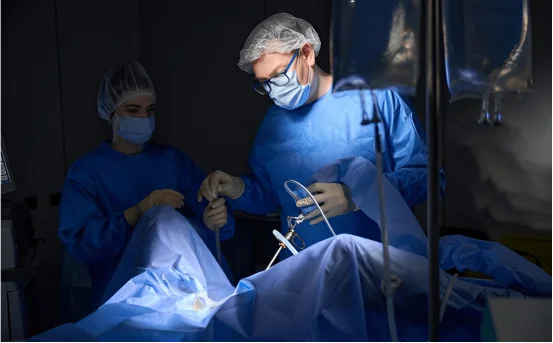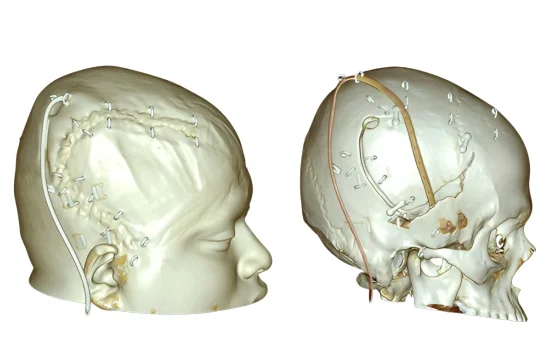The minimally-invasive gynecological surgery allows doctors to diagnose and treat uterine problems without having to make any incisions. This advanced technique uses a tube to diagnose and treat uterine problems.
hysteroscopic surgeries are now considered the gold standard in treating uterine anomalies. They have a rapid recovery, minimal discomfort and high success rate.
What is Hysteroscopic surgery?
A procedure allows direct visualization of uterine cavity. The hysteroscope is inserted through the cervix and into the uterus. The gynecologist can diagnose problems and perform surgery to remove polyps, fibroids or adhesions.
Two main types of hysteroscopic surgery are available:
- Diagnostic Hysteroscopy : Used to diagnose uterine issues.
- Operative Hysteroscopy : Used to treat the problem diagnosed using surgical instruments that are passed through the hysteroscope.
Why Is Hysteroscopic Surgery Performed
Often, hysteroscopic surgery is performed to diagnose or treat conditions such as:
- Uterine Fibroids or Polyps:- These growths can cause pain, heavy bleeding and infertility. These growths can be removed effectively with hysteroscopic surgery.
- Abnormal Uterine Blood Bleeding:- Hysteroscopy is a great way to determine what’s causing your irregular, heavy or prolonged periods and possibly treat them in the same session.
- Infertility and Recurrent miscarriage:- The hysteroscope can be used to identify structural issues within the uterus which may contribute to infertility and recurrent miscarriages.
- Septate Uterus:- Congenital defect in which a wall separates the uterus. This can be corrected by hysteroscopic surgical procedures.
- Intrauterine adhesions (Asherman syndrome):- The scar tissue that is inside the uterus can be removed with hysteroscopic instruments to restore normal functioning.
Procedure of Hysteroscopic surgery
Before Surgery
- You may need to perform a pelvic exam or ultrasound.
- You may be advised by your doctor to avoid eating or drinking anything 6-8 hours before the procedure.
- Some women are prescribed medication to soften their cervix.
During the Procedure
- This procedure is usually performed in an outpatient setting.
- The cervix will be dilated by inserting a speculum.
- The uterus is gently probed with a hysteroscope.
- For better visibility, the uterus can be expanded with saline solution or CO2.
- The hysteroscope is used to insert surgical instruments if surgery is required.
It can last anywhere from 15 to 1 hour, depending on its complexity.
After Surgery
- You will be monitored for some time.
- The majority of women can return home on the same day.
- For a few weeks, mild cramping and spotting can occur.
Hysteroscopic surgery: Benefits
- Minimally Invasive:- No incisions on the outside, resulting in less pain and faster recovery.
- Quick Recovery Time:- The majority of patients return to normal activities in 1-2 days.
- Accurate diagnosis and treatment:- Direct visualisation allows targeted treatment.
- Increased Fertility:- The removal of fibroids, adhesions or polyps can improve fertility.
Lower risk Comparing hysteroscopy to laparoscopic or open surgery, there is a lower risk of infection.
Risks and Complications
Although rare, there are some risks associated with hysteroscopic surgeries, including:
- Uterine perforation (rare)
- Excessive bleeding
- Infection
- Fluid Overload (from Dispersing Media)
- Adhesion reformation (scar tissue returning)
These risks can be minimized by choosing a gynecologic specialist with experience.
Recovery after Hysteroscopic Surgery
The majority of women will recover completely within a couple of days. What to expect
Recovery Time
- Light spotting can last 1-2 days.
- Mild abdominal cramps
- Avoid swimming, tampons or intercourse for 1-2 weeks.
Follow-Up
- A follow-up visit is typically scheduled within 1 to 2 weeks.
- The results of the biopsy will be discussed if tissue is removed.
When to Consult a Doctor
- Heavy bleeding
- Fever or chills
- Abdominal pain that is severe
- Foul-smelling discharge
What is the ideal candidate?
If you are:
- Unusual uterine bleeding
- Diagnosed with fibroids or Polyps
- Infertility and miscarriages
- You may have uterine abnormalities
Alternatives to Hysteroscopic surgery
Alternatives may be available depending on your health condition.
- Hormonal treatment
- Laparoscopic surgery
- Endometrial ablation
- Dilation and curettage
Hysteroscopy, however, is preferred because of its precision and minimally invasive nature.
Conclusion
The hysteroscopic procedure is a minimally invasive way to diagnose and treat uterine issues. This procedure is ideal for treating abnormal bleeding, fertility problems, and uterine growths. It offers a faster recovery time, as well as fewer complications, compared to conventional surgery.
Consult a gynecologist if you are experiencing symptoms related your menstrual period or reproductive health to determine if hysteroscopic surgical would be the best solution for you.























